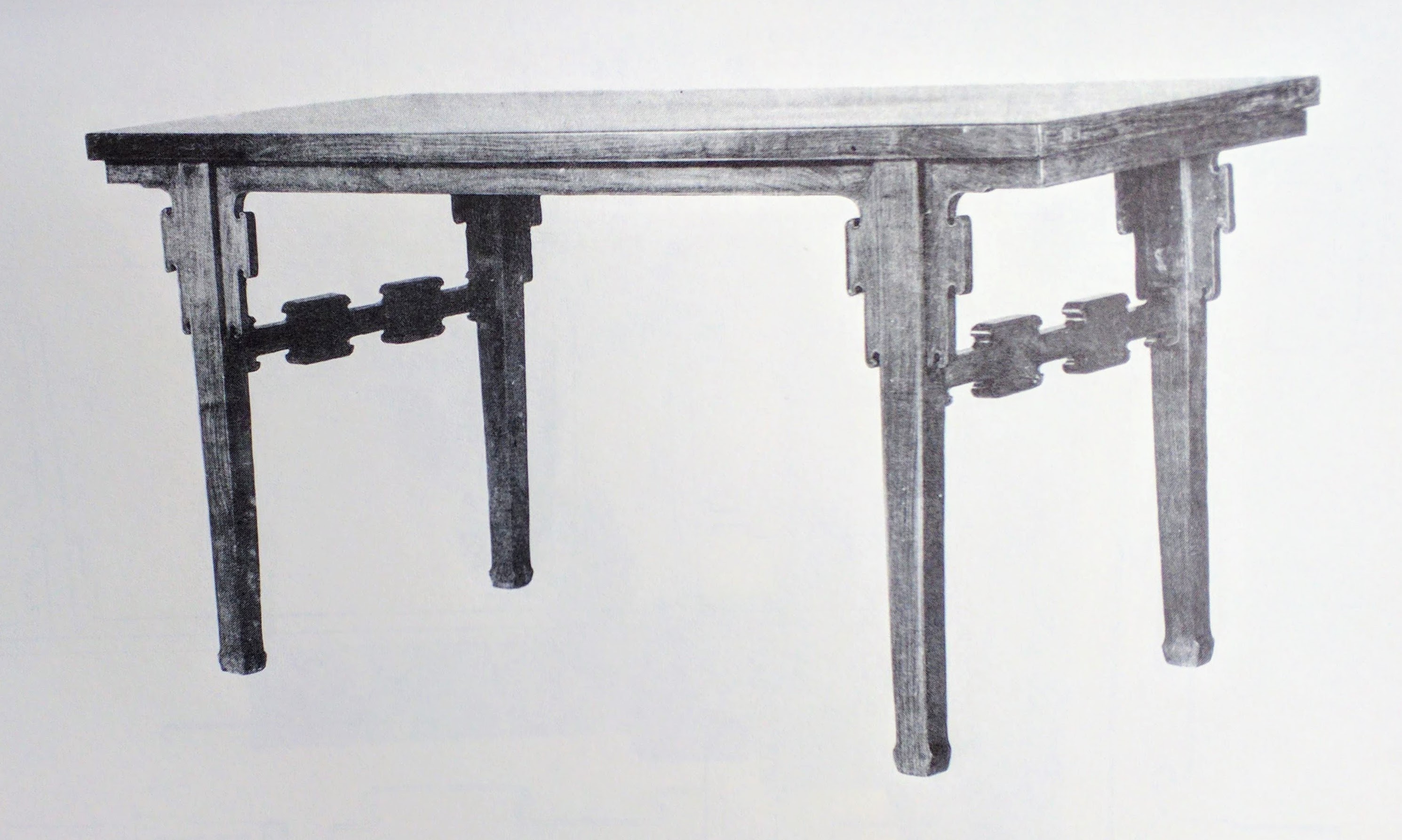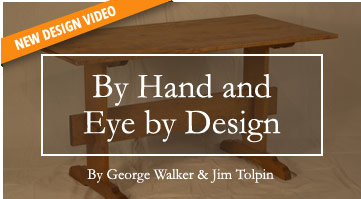We are often asked if the traditional western practice of designing objects (such as furniture) to whole number harmonic ratios could have also been the case in the Orient. If my analysis of some antique Chinese furniture (as based on the measured drawings in Gustav Ecke’s Chinese Domestic Furniture first published in 1944) is correct it certainly seems so. In the case of the writing table shown above an exploration of the drawings below with a pair of dividers reveals–to pinpoint accuracy–these underlying whole number ratio relationships:
A height-to-length ratio of 2:3
A depth-to-length ratio of 1:2
An overhang of top-to-leg length of 1:5
A corbel height-to-leg length of 1:3
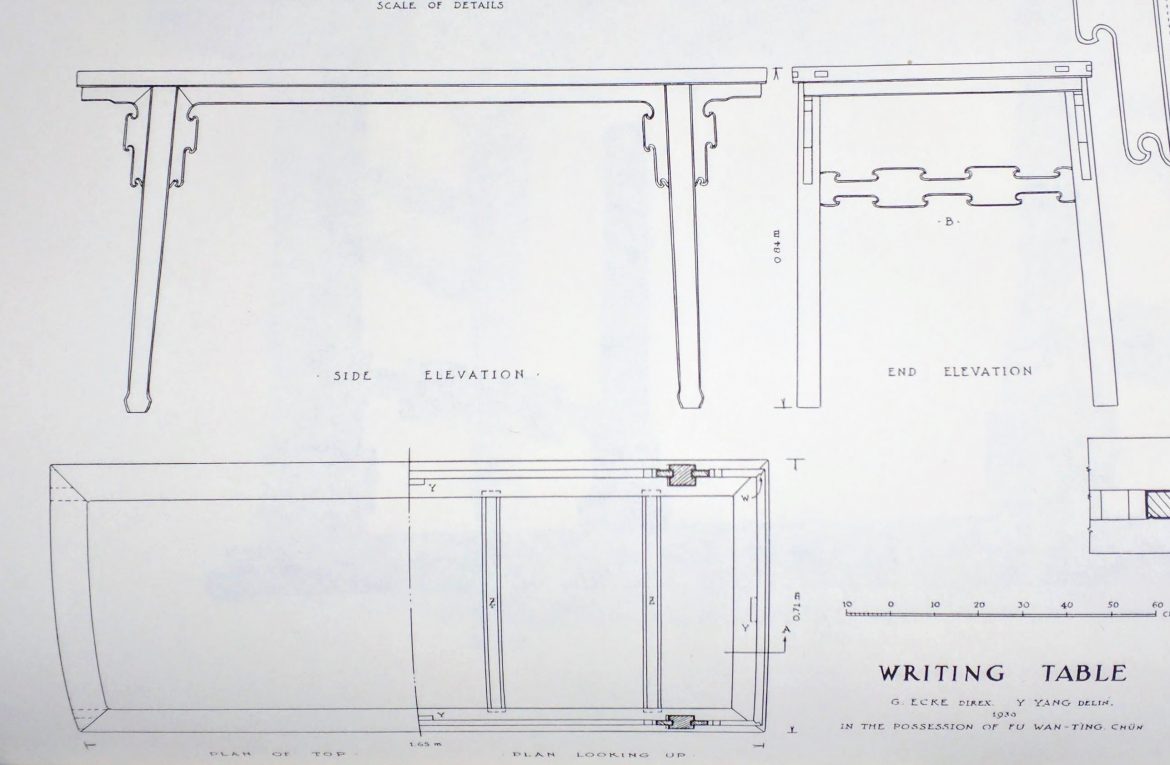
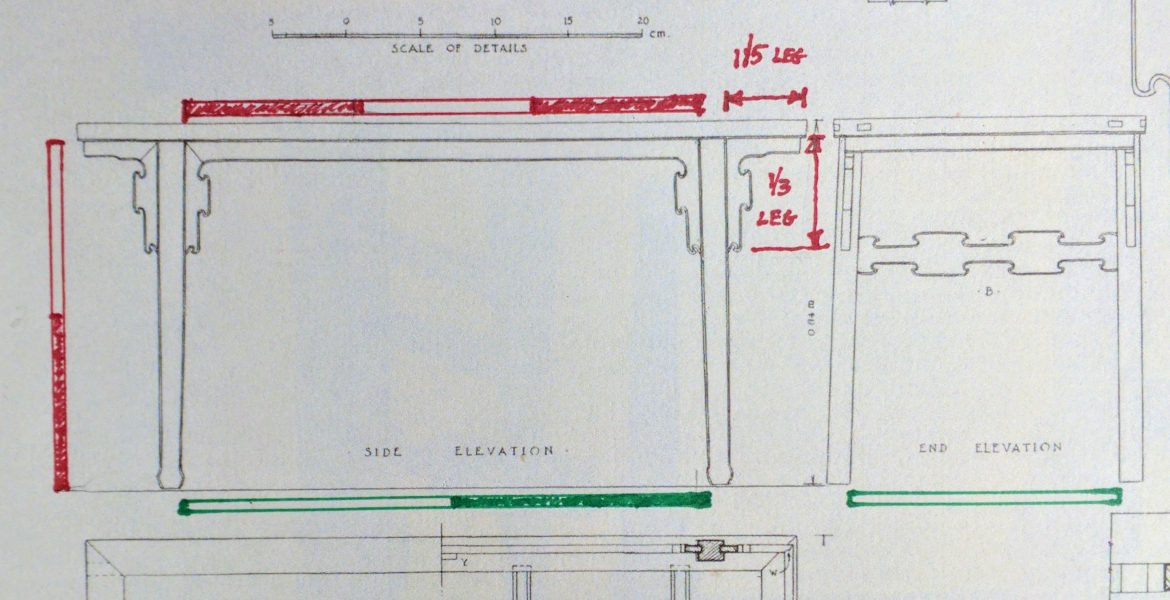
Now let’s take the dividers to another Chinese furniture piece:
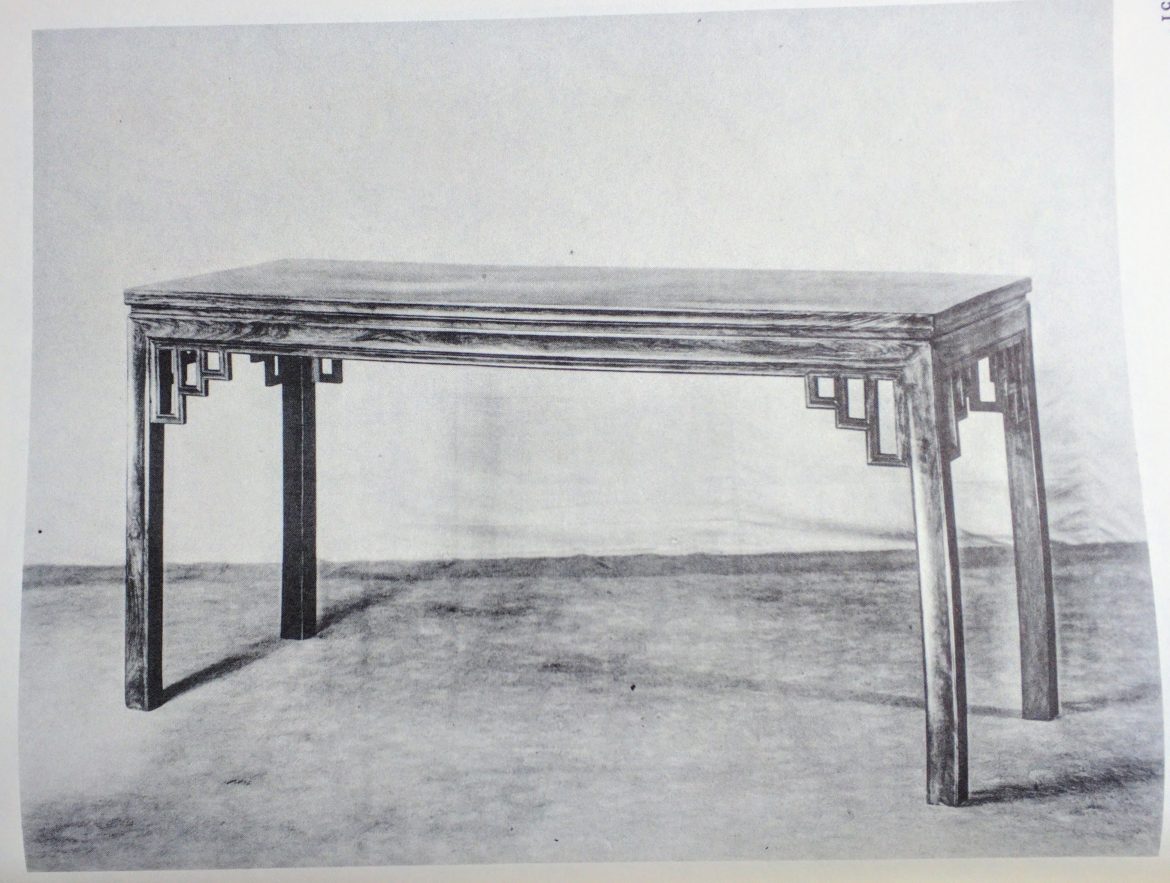
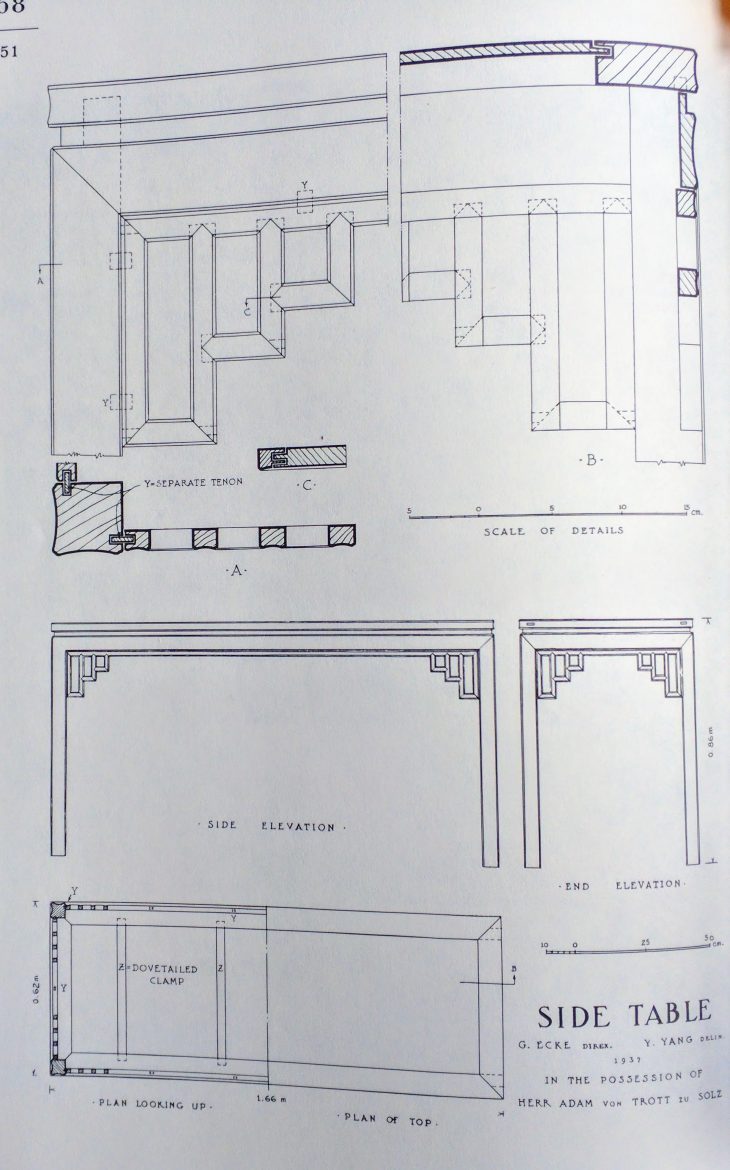
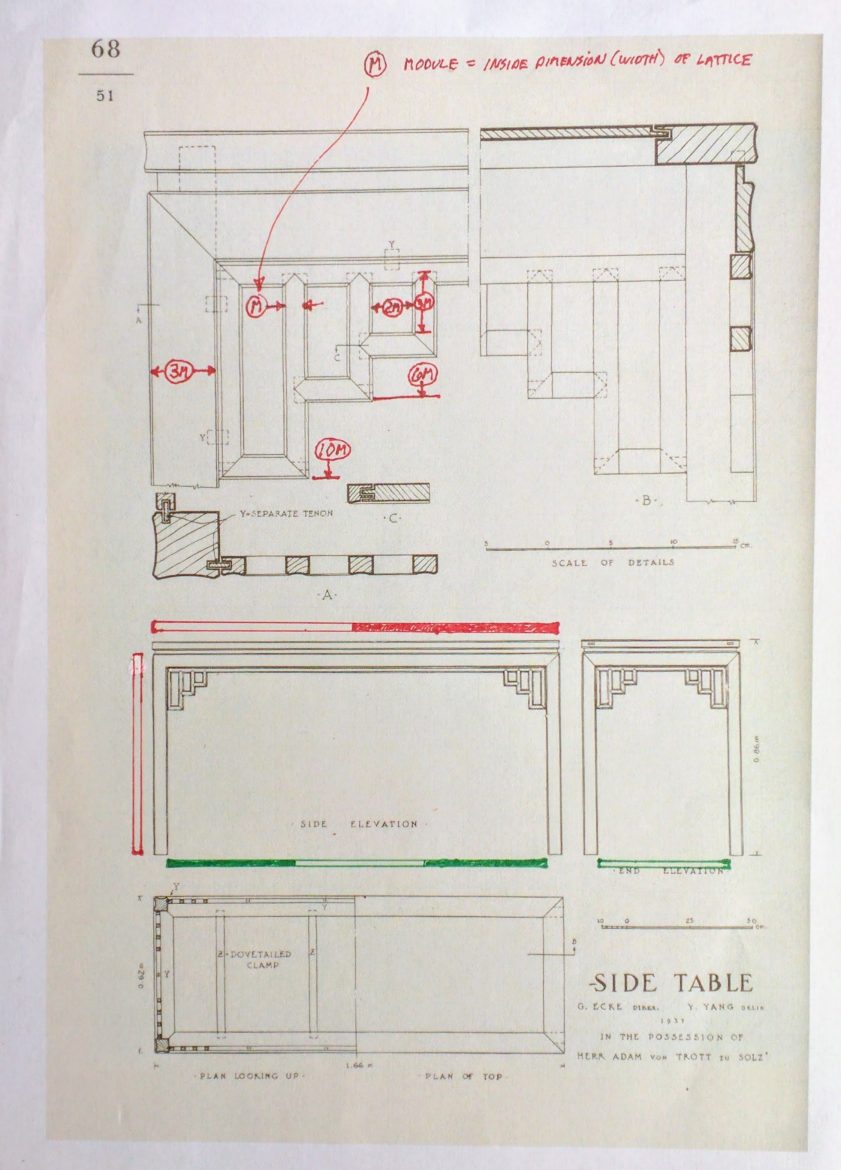
Here’s what the dividers smoke out:
A height-to-length ratio of 1:2
A depth-to-length ratio of 1:3
A lattice design based on a module the size of the batten width resulting in a sequence of ratios 1:1; 2:3 and 3:5 (octave, fifth and sixth musical consonants)
The width of the legs and apron pieces are 3 modules wide
So does East meet West? I believe the dividers would say yes. But they don’t say who influenced who or whether this ancient design method arose independently.

